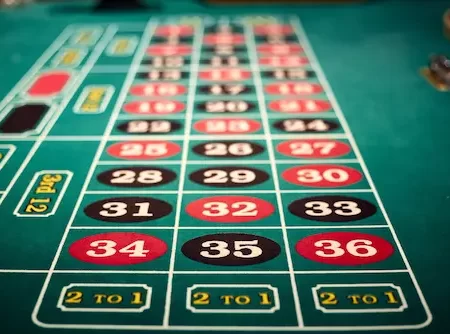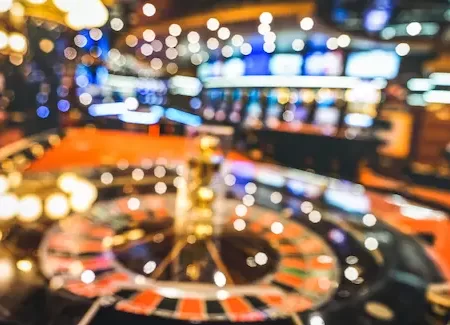Estimated reading time: 6 minutes
Welcome to our blog post, “Poker Face: Mastering the Art of Poker Bluffing.” Poker is a game of technique, talent, and luck. While some players rely solely on their cards to win, others use bluffing as a powerful tool to deceive their opponents and gain an advantage at the table. Bluffing in poker means pretending to have a better hand than what you hold, making your opponents believe you have a winning combination. It requires great skill to bluff effectively and can distinguish between succeeding and failing hands. In this post, we’ll delve into the art of bluffing in poker, exploring the key strategies to help you bluff successfully. We’ll cover the different types of bluffs you can use, the importance of reading your opponents, and the psychology behind successful bluffing. We’ll also share some tips on how to avoid common bluffing mistakes and improve your overall poker game.
Control your nonverbal cues.
In poker, mastering the art of bluffing is essential to winning big, and one of the keys to a successful bluff is a good “Poker Face.” This means controlling your nonverbal cues to avoid showing signs of nervousness or excitement that could tip off your opponents to your true hand. To do this, it’s important to practice maintaining a neutral expression, avoiding fidgeting or nervous tics, and controlling your body language, such as maintaining good posture and avoiding crossing your arms or legs. By mastering these nonverbal cues, you can increase your chances of successfully bluffing your opponents and walking away with a big win at the poker table.
Learn to read your opponents.
In poker, understanding how to read your opponents is a critical skill that can help you gain a significant advantage. Analyzing your opponents’ behavior, betting patterns, and body language can provide valuable insights into the strength of their hand and overall strategy. By mastering the art of reading your opponents, you can develop a better sense of when to bluff, when to fold, and when to go all-in. To improve your Poker Face, paying close attention to your opponents from the moment you sit down at the table, and noting any tendencies or patterns that can give you an edge in the game, is important. Whether playing in a casual home game or competing in a high-stakes tournament, learning to read your opponents is a skill that can take your poker game to the next level.
Know when to bluff.
One of the key strategies in mastering the art of poker bluffing is knowing when to bluff and when to fold. Bluffing requires a certain level of skill and intuition and the ability to read your opponent’s actions and behaviors. As a player, it’s important to understand that bluffing can be a double-edged sword, and knowing when to use it effectively can mean the difference between winning big and losing everything. The key is recognizing the right opportunities to bluff, such as when you have a weak hand, and your opponents seem hesitant or when you have a strong hand and your opponents are overly confident. Ultimately, a successful poker face can outsmart and outmaneuver opponents at the right time, ultimately leading to a winning hand.
Use bluffing as a tool.
Bluffing is a critical component of any successful poker player’s arsenal; mastering it can significantly increase your chances of winning. However, simply bluffing for the sake of it can be risky and may lead to losses. Therefore, it’s essential to use bluffing as a tool and not as a last resort. This means bluffing with a purpose and having a well-thought-out plan in place. Knowing when and how to bluff requires a deep understanding of your opponent’s tendencies and the ability to read their “Poker Face.” With practice and experience, you can learn to bluff effectively and use it as a strategic tool to take control of the game and ultimately achieve success at the poker table.
Practice makes perfect.
One of the key principles in mastering the art of poker bluffing, or having a solid “Poker Face,” is the age-old adage of “practice makes perfect.” To become proficient at bluffing, players must consistently practice their techniques and strategies in various scenarios. This can involve playing against different opponents, testing out different bluffing tactics, and analyzing the outcomes of each hand. The more practice players have, the more comfortable and confident they will become in their ability to bluff successfully. However, it’s important to note that while practice is necessary for improving one’s bluffing skills, it’s equally important to remain adaptable and open to change. As the game of poker evolves and new strategies emerge, players must be willing to adjust their tactics and continue learning to maintain a competitive edge.
In conclusion, mastering the art of poker bluffing is a skill that requires practice, understanding of your opponents, and strategic thinking. It’s not an easy task, but you can become a successful bluffer with dedication. Remember that bluffing is just one tool in your arsenal and should be used strategically and sparingly. Remember that even the best bluffers can be caught, so always be prepared to adjust your strategy and adapt to the game. With time and practice, you can become a master of poker bluffing and take your game to the next level.
| Key Points | Details |
|---|---|
| Control your nonverbal cues | Mastering your “Poker Face” is crucial to bluffing success. Maintain neutral expressions, control body language and avoid fidgeting. |
| Learn to read your opponents | Understanding opponents’ behavior, betting patterns, and body language can provide valuable insights for strategic decision-making in poker. |
| Know when to bluff | Understanding when to bluff is critical. It is best to bluff when opponents seem hesitant or overly confident, based on your hand’s strength. |
| Use bluffing as a tool | Bluffing is a strategy, not a last resort. Use it with purpose, and have a plan in place to enhance your chances of winning. |
| Practice makes perfect | Consistent practice in various scenarios is crucial for mastering bluffing techniques. As poker evolves, stay adaptable and open to learning new strategies. |
Bluffing in poker is pretending to have a better hand than what you actually hold. This strategy aims to make opponents believe you have a winning combination, which can lead to them folding and thus securing your win.
A player can control their nonverbal cues by maintaining a neutral expression, avoiding fidgeting, controlling body language such as maintaining good posture, and not crossing arms or legs. This helps to maintain a successful “Poker Face” and prevents opponents from reading their hands.
Reading your opponents’ behavior, betting patterns, and body language can provide valuable insights into the strength of their hand and overall strategy. It helps a player to know when to bluff, when to fold, and when to go all-in.
The right time to bluff is when you have a weak hand and your opponents seem hesitant or when you have a strong hand and your opponents are overly confident. However, it requires skill, intuition, and a deep understanding of your opponents’ behaviors and tendencies.















